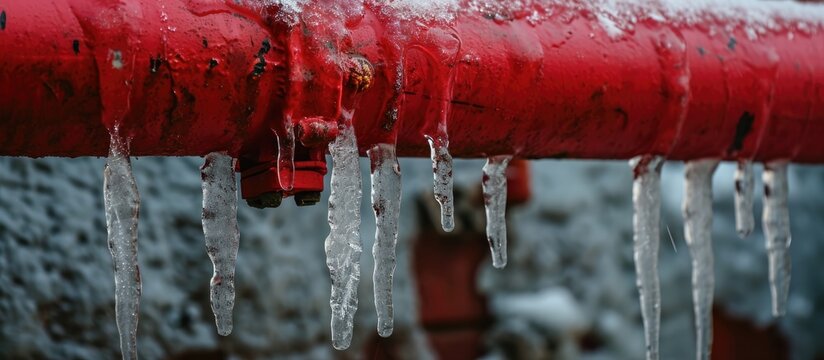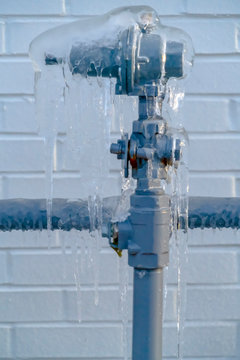What're your opinions concerning Preventing and dealing with frozen pipes?

Cold weather can wreak havoc on your pipes, specifically by freezing pipes. Here's just how to stop it from occurring and what to do if it does.
Intro
As temperatures drop, the danger of frozen pipelines increases, possibly resulting in pricey repairs and water damage. Understanding exactly how to prevent icy pipes is critical for property owners in cool environments.
Understanding Frozen Pipelines
What triggers pipelines to ice up?
Pipes freeze when subjected to temperature levels below 32 ° F (0 ° C) for prolonged durations. As water inside the pipelines ices up, it increases, taxing the pipeline wall surfaces and possibly creating them to rupture.
Dangers and damages
Frozen pipes can result in supply of water interruptions, residential property damage, and costly fixings. Ruptured pipes can flooding homes and trigger substantial architectural damages.
Signs of Frozen Piping
Recognizing icy pipelines early can stop them from bursting.
How to identify frozen pipes
Search for lowered water circulation from taps, unusual odors or noises from pipelines, and visible frost on revealed pipes.
Prevention Tips
Insulating prone pipelines
Wrap pipes in insulation sleeves or make use of heat tape to safeguard them from freezing temperature levels. Focus on pipes in unheated or exterior areas of the home.
Home heating strategies
Maintain interior rooms appropriately heated, especially areas with pipes. Open up cupboard doors to enable warm air to circulate around pipelines under sinks.
Shielding Exterior Pipes
Garden tubes and outdoor faucets
Disconnect and drain pipes yard hoses prior to winter months. Install frost-proof spigots or cover exterior faucets with shielded caps.
What to Do If Your Pipes Freeze
Immediate actions to take
If you presume frozen pipes, maintain faucets available to ease stress as the ice melts. Make use of a hairdryer or towels taken in warm water to thaw pipelines gradually.
Long-Term Solutions
Architectural modifications
Take into consideration rerouting pipelines away from exterior walls or unheated areas. Add extra insulation to attics, cellars, and crawl spaces.
Upgrading insulation
Invest in premium insulation for pipelines, attics, and walls. Correct insulation aids maintain consistent temperatures and minimizes the threat of icy pipes.
Final thought
Stopping icy pipelines needs positive procedures and quick reactions. By comprehending the reasons, signs, and safety nets, home owners can secure their plumbing during winter.
5 Ways to Prevent Frozen Pipes
Drain Outdoor Faucets and Disconnect Hoses
First, close the shut-off valve that controls the flow of water in the pipe to your outdoor faucet. Then, head outside to disconnect and drain your hose and open the outdoor faucet to allow the water to completely drain out of the line. Turn off the faucet when done. Finally, head back to the shut-off valve and drain the remaining water inside the pipe into a bucket or container. Additionally, if you have a home irrigation system, you should consider hiring an expert to clear the system of water each year.
Insulate Pipes
One of the best and most cost-effective methods for preventing frozen water pipes is to wrap your pipes with insulation. This is especially important for areas in your home that aren’t exposed to heat, such as an attic. We suggest using foam sleeves, which can typically be found at your local hardware store.
Keep Heat Running at 65
Your pipes are located inside your walls, and the temperature there is much colder than the rest of the house. To prevent your pipes from freezing, The Insurance Information Institute suggests that you keep your home heated to at least 65 degrees, even when traveling. You may want to invest in smart devices that can keep an eye on the temperature in your home while you’re away.
Leave Water Dripping
Moving water — even a small trickle — can prevent ice from forming inside your pipes. When freezing temps are imminent, start a drip of water from all faucets that serve exposed pipes. Leaving a few faucets running will also help relieve pressure inside the pipes and help prevent a rupture if the water inside freezes.
Open Cupboard Doors
Warm your kitchen and bathroom pipes by opening cupboards and vanities. You should also leave your interior doors ajar to help warm air circulate evenly throughout your home.

I'm just very intrigued by Prevent Frozen Pipes and I really hope you liked my post. If you liked our article please do not forget to share it. Thanks a bunch for your time. Don't forget to check up our blog back soon.
Click Here